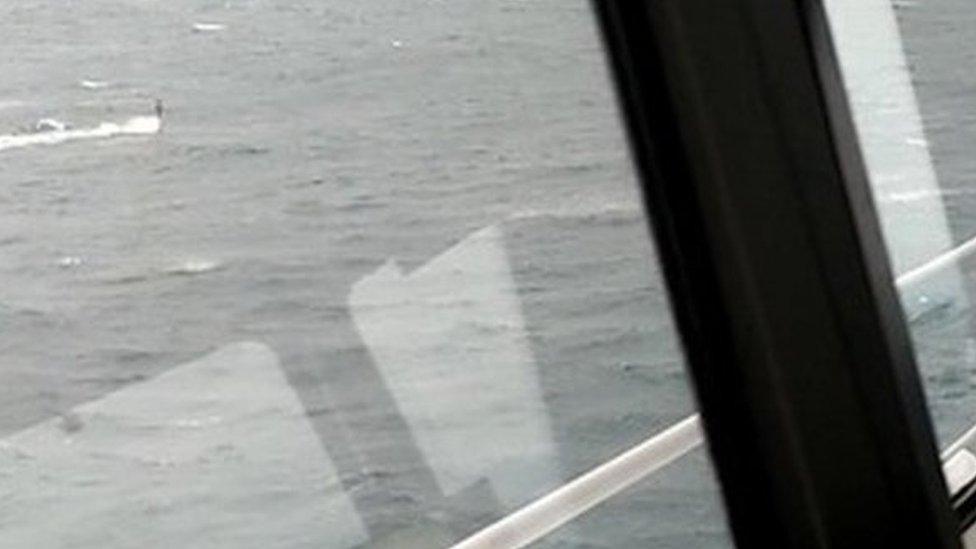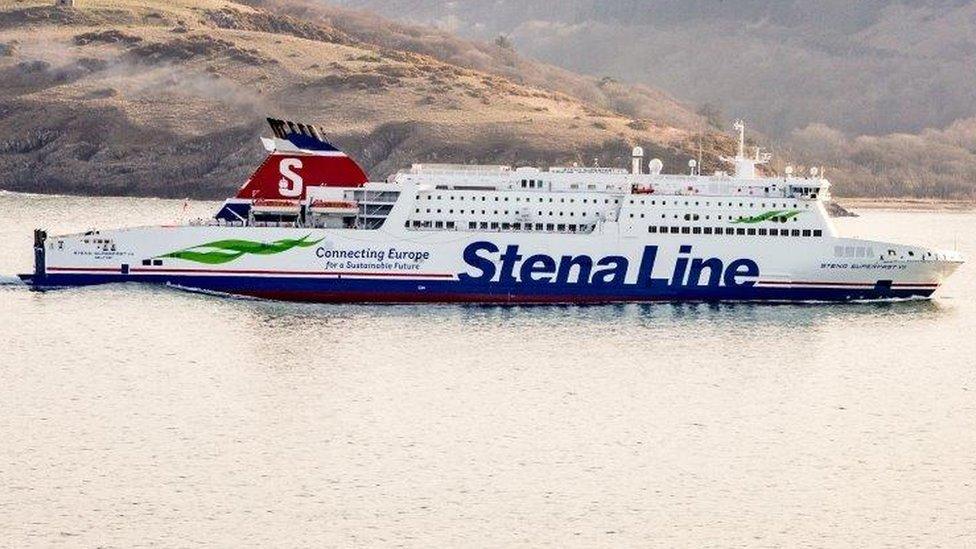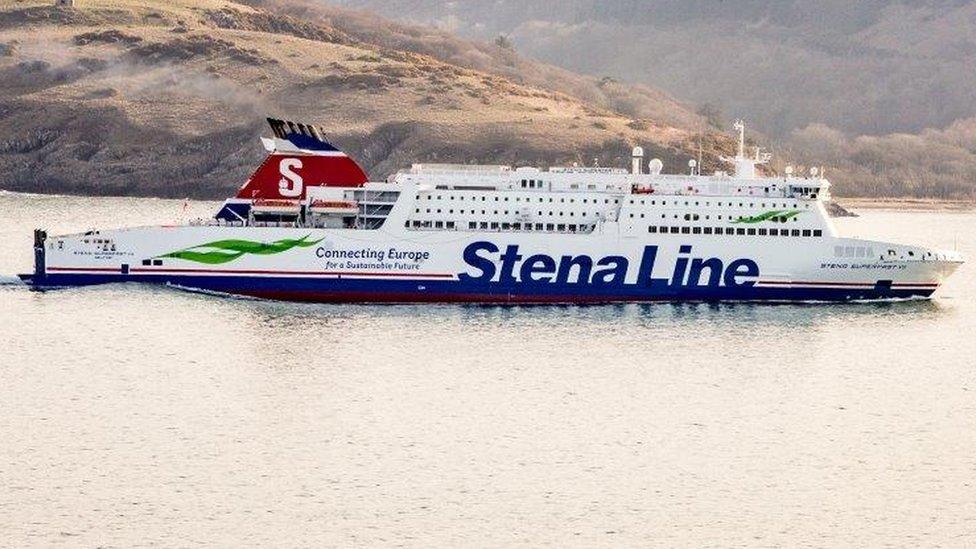North Channel submarine near-miss endangered ferry passengers
- Published

A photo taken from the ferry shows the submarine's periscope
Passengers were put in "immediate danger" when a nuclear-powered submarine and a ferry nearly collided between Scotland and Nothern Ireland.
The Marine Accident Investigation Branch (MAIB), external said the vessels came within 50-100m of one another in the North Channel.
Investigators found the submarine underestimated the ferry's speed.
The Stena Superfast VII ferry, travelling from Belfast to Cairnryan, turned to avoid a collision.
It happened in November 2018 and was the third near-miss in four years involving a Royal Navy submarine and surface vessel.
There were 215 passengers and 67 crew on board the ferry when the lookout spotted a submarine's periscope close ahead.
The officer on watch had to take immediate action to turn the vessel and avoid collision, the report said.
The Royal Navy submarine, based in Faslane, had been patrolling an area south of the ferry route.
The investigation found the submarine's control room team underestimated the ferry's speed and overestimated its range which led to the unsafe situation.
"This combination meant that the submarine's commanding officer and its officer of the watch made safety-critical decisions that might have appeared rational to them at the time but were actually based on inaccurate information," the report concluded.
When the submarine's control room team initially detected the ferry visually, they estimated it to be at a range of 9,000-10,000 yards.

The Stena Superfast VII and a Royal Navy submarine had a near-miss in the North Channel
At a speed of 21 knots, Stena Superfast VII would cover 6,000 yards in eight minutes and 34 seconds, which was an estimate of the time available for the submarine's officer of the watch (OOW) to take avoiding action.
However, the report found the OOW had estimated the ferry's speed as 15 knots, so would have "incorrectly calculated" it would take the ferry 12 minutes to travel 6,000 yards and "almost certainly assessed that there was significantly more time to take avoiding action than was actually the case".
A number of key safety issues were identified in the report such as passage planning and identifying potential hazards.
Andrew Moll, Chief Inspector of Marine Accidents, said the Royal Navy had co-operated with the investigation and taken a series of actions to prevent a recurrence.
However, he added: "I have today recommended that the Royal Navy undertakes an independent review of the actions that have been taken, in order to ensure that the risk of similar collisions has been reduced to as low as possible."
- Published21 January 2019
